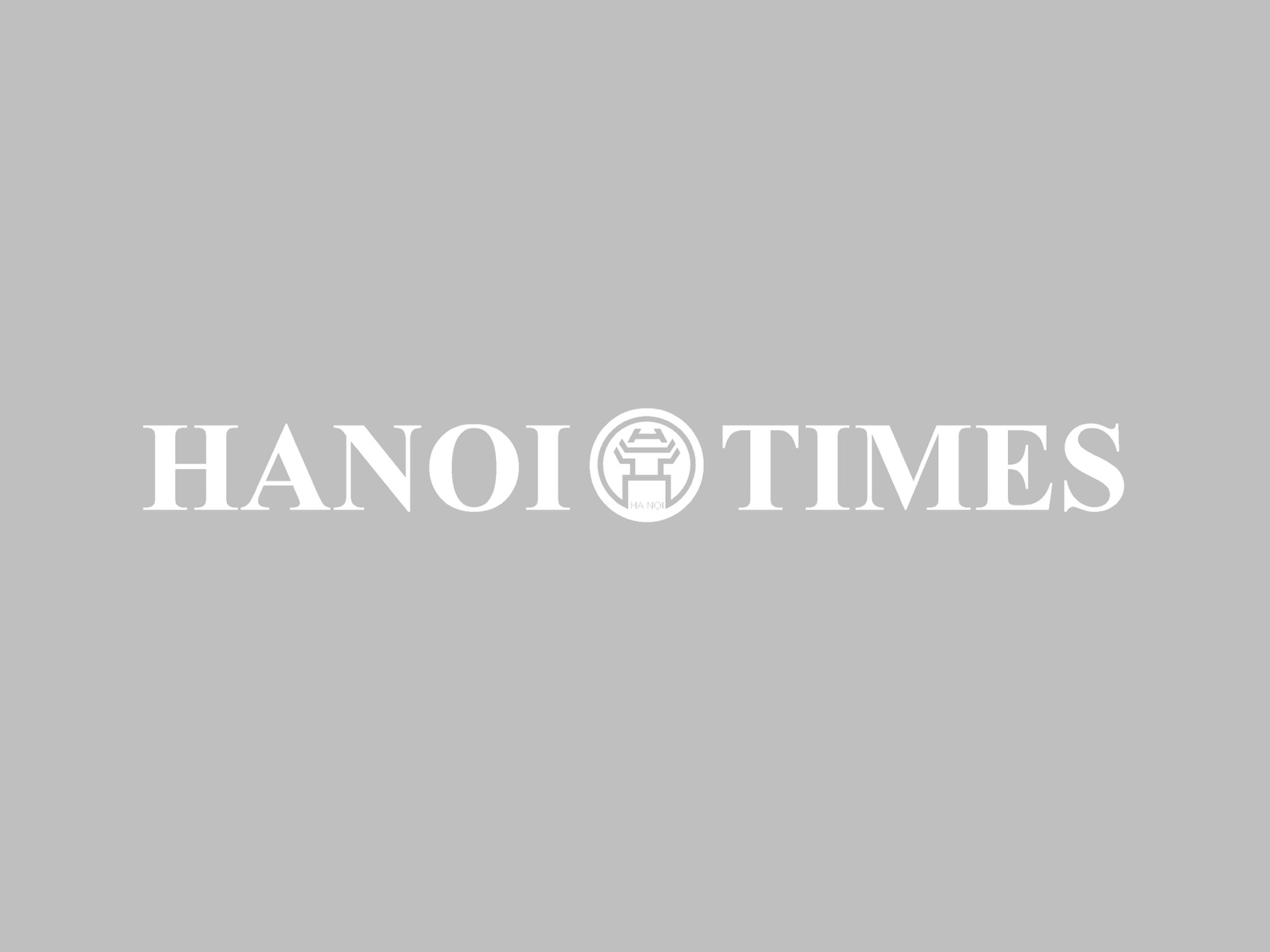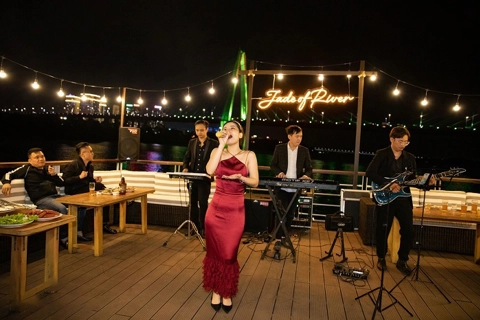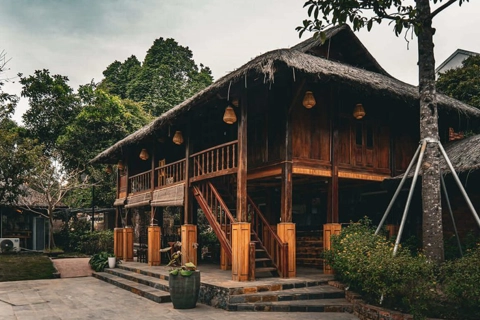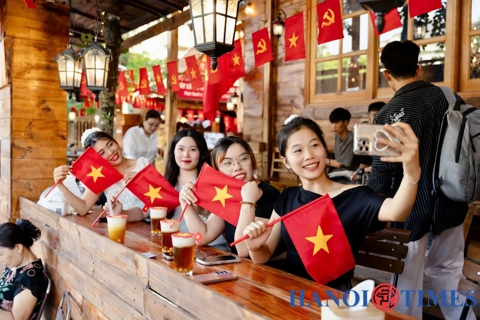Travel
Vietnamese tourists prefer Korea, Japan
May 11, 2018 / 03:28 PM
Vietnam has become a key source market for the Japanese and Korean tourism industry as the number of Vietnamese traveling to the markets has posted double-digit growth in recent time.
The Korean Tourism Organization (KTO) in Vietnam reported that more than 118,000 Vietnamese visited Korea in the first four months of this year, a 33.5 percent year-on-year rise. Vietnam now tops the list of Korea’s highest growing tourism markets.
Nguyen Thu Ha, director of public relations at the representative office of KTO in Vietnam, said that South Korea is looking to welcome some 400,000 Vietnamese tourists this year given a surprise surge last year. The actual number might be higher, she added.
Korea has so far organized many events to boost tourism promotion in Vietnam. Many delegations from Korea have traveled to Vietnam to promote tourism products and services since last year, Ha said.
In the first quarter of this year, tourism promotion delegations from different parts of South Korea came to Vietnam to carry out programs to lure more Vietnamese tourists to their country this year as Vietnam has emerged as a key source market for Korea.
This year will see more such delegations coming here, Ha said, adding tourism promotion programs will be held in Ho Chi Minh City and Hanoi on a monthly basis.
Vietnam is one of the largest source markets of Korea’s tourism and has the highest growth rate among Southeast Asian countries. Last year, more than 323,000 Vietnamese visitors came to Korea, up 28.8 percent over 2016.
Korea has also implemented preferential policies to bring in more Vietnamese tourists, including relaxing visa requirements for customers who book tours at accredited tourism firms in Vietnam, supporting Vietnamese travel companies to introduce Korea tours and giving gifts to visitors. KTO Vietnam will also implement many marketing programs in Vietnam for medical tourism, high-end tourism and Hallyu wave.
Ha said a six-day tour to Korea would cost a little higher than VND15 million if guests choose to fly with Vietnam Airlines or VND12 million if budget-conscious travelers fly with a low-cost airline, way below the VND19-20 million range five years ago.
As for the Japanese market, data of the Japan National Tourism Organization (JNTO) showed that Japan saw a year-on-year pickup of 16.3 percent in Vietnamese arrivals with 86,300 in the first quarter of 2018.
Last year, 308,900 Vietnamese tourists visited Japan, up 32 percent against 2016, of which 39 percent came there for leisure travel, the highest in South Asia.
The JNTO last year opened its first office in Vietnam as part of the two countries’ effort to boost tourism cooperation. Tourism officials hope to increase the number of Vietnamese visitors to Japan from 308,900 last year to around 500,000 by 2018.
Ayumi Takahasi, a representative of JNTO in Hanoi, said that the office will organize a range of promotional activities in the coming time.
Relaxed visa requirements and better tour prices have made Japan and South Korea more appealing to Vietnamese travelers.
Industry insiders said that a desire to explore new places and cultures, an affordable cost, diverse services, and lower chances of scams and overcharging are among the reasons why people prefer overseas tours.
Sean Preston, country manager in charge of Vietnam, Cambodia and Laos at Visa, said a growing middle class has fueled the demand for foreign trips.
Preston’s survey showed that an average Vietnamese tourist will travel abroad five times in the next two years. The previous figure was only 3.5 times per person.

A six-day tour to Korea will cost some VND12-15 million
|
Korea has so far organized many events to boost tourism promotion in Vietnam. Many delegations from Korea have traveled to Vietnam to promote tourism products and services since last year, Ha said.
In the first quarter of this year, tourism promotion delegations from different parts of South Korea came to Vietnam to carry out programs to lure more Vietnamese tourists to their country this year as Vietnam has emerged as a key source market for Korea.
This year will see more such delegations coming here, Ha said, adding tourism promotion programs will be held in Ho Chi Minh City and Hanoi on a monthly basis.
Vietnam is one of the largest source markets of Korea’s tourism and has the highest growth rate among Southeast Asian countries. Last year, more than 323,000 Vietnamese visitors came to Korea, up 28.8 percent over 2016.
Korea has also implemented preferential policies to bring in more Vietnamese tourists, including relaxing visa requirements for customers who book tours at accredited tourism firms in Vietnam, supporting Vietnamese travel companies to introduce Korea tours and giving gifts to visitors. KTO Vietnam will also implement many marketing programs in Vietnam for medical tourism, high-end tourism and Hallyu wave.
Ha said a six-day tour to Korea would cost a little higher than VND15 million if guests choose to fly with Vietnam Airlines or VND12 million if budget-conscious travelers fly with a low-cost airline, way below the VND19-20 million range five years ago.
As for the Japanese market, data of the Japan National Tourism Organization (JNTO) showed that Japan saw a year-on-year pickup of 16.3 percent in Vietnamese arrivals with 86,300 in the first quarter of 2018.
Last year, 308,900 Vietnamese tourists visited Japan, up 32 percent against 2016, of which 39 percent came there for leisure travel, the highest in South Asia.
The JNTO last year opened its first office in Vietnam as part of the two countries’ effort to boost tourism cooperation. Tourism officials hope to increase the number of Vietnamese visitors to Japan from 308,900 last year to around 500,000 by 2018.
Ayumi Takahasi, a representative of JNTO in Hanoi, said that the office will organize a range of promotional activities in the coming time.
Relaxed visa requirements and better tour prices have made Japan and South Korea more appealing to Vietnamese travelers.
Industry insiders said that a desire to explore new places and cultures, an affordable cost, diverse services, and lower chances of scams and overcharging are among the reasons why people prefer overseas tours.
Sean Preston, country manager in charge of Vietnam, Cambodia and Laos at Visa, said a growing middle class has fueled the demand for foreign trips.
Preston’s survey showed that an average Vietnamese tourist will travel abroad five times in the next two years. The previous figure was only 3.5 times per person.








